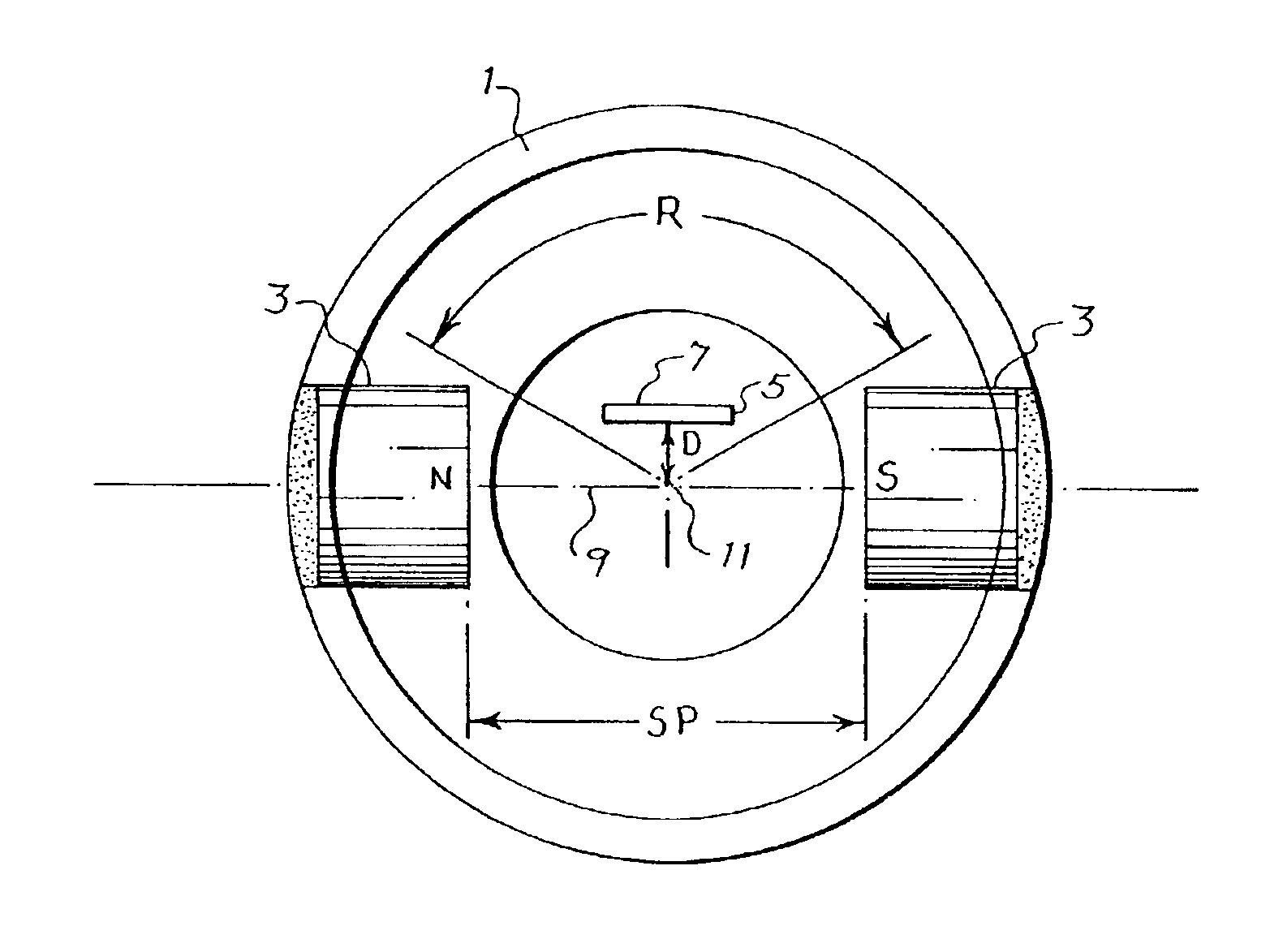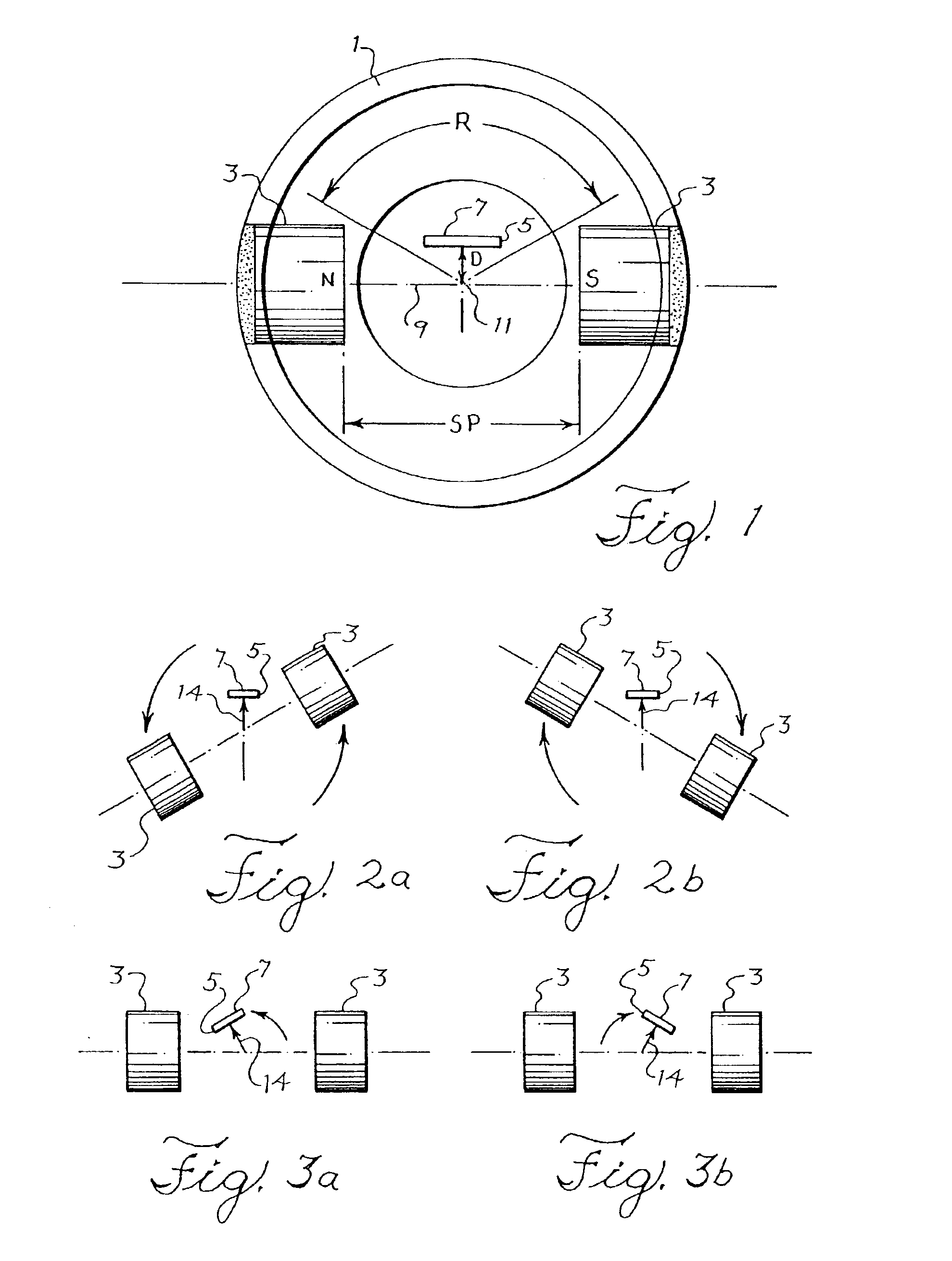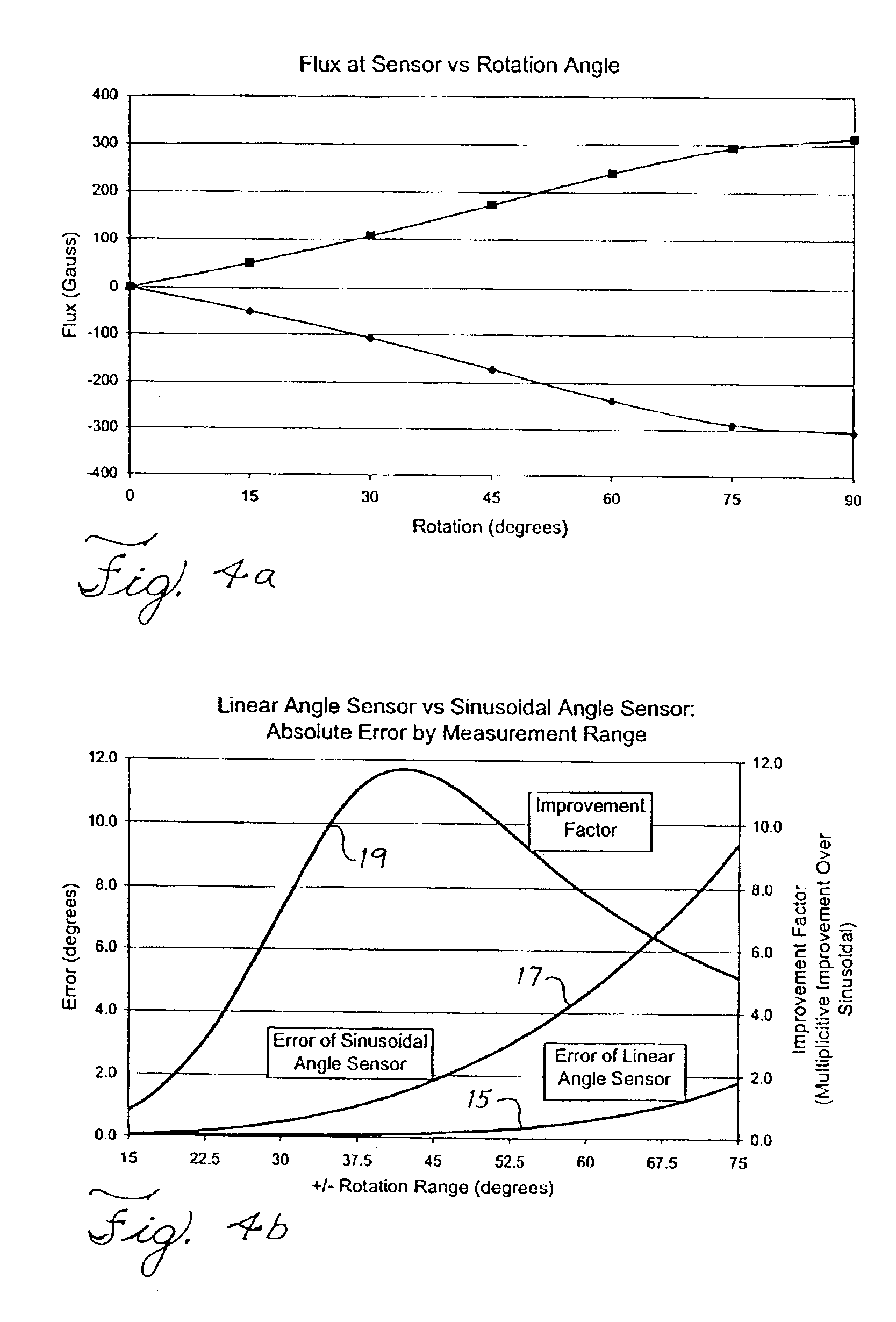Angular position sensor
a technology of angular position and sensor, applied in the field of magnetic sensors, can solve problems such as acceptable rotation error of devices, and achieve the effect of significant accuracy and accurate detection
- Summary
- Abstract
- Description
- Claims
- Application Information
AI Technical Summary
Benefits of technology
Problems solved by technology
Method used
Image
Examples
Embodiment Construction
[0028]FIG. 1 is a schematic diagram of an improved angular position sensor. As shown in FIG. 1, a cylinder 1 contains a pair of opposed magnets 3 and an offset magnetosensitive detector or flux sensor 5, for example a hall-effect flux sensor or magnetoresistor, which generates electrical signals that correspond to the intensity of magnetic flux detected normal to the top sensing face 7 of the device. Magnetosensitive devices having a different detecting orientation would have correspondingly different offset orientations.
[0029]The magnets 3 are affixed to the cylinder 1 with their opposite north (N) and south (S) poles facing one another. An imaginary line 9 of geometric and magnetic symmetry passes through the axis of rotation 11 of the cylinder 1 and connects the faces of the magnets. The line 9 lies on the diameter of a circular cross-section of the cylinder 1. The disposition of the magnets is therefore symmetrical with respect to the line 9 and axis 11 of rotation of the cylind...
PUM
 Login to View More
Login to View More Abstract
Description
Claims
Application Information
 Login to View More
Login to View More - R&D
- Intellectual Property
- Life Sciences
- Materials
- Tech Scout
- Unparalleled Data Quality
- Higher Quality Content
- 60% Fewer Hallucinations
Browse by: Latest US Patents, China's latest patents, Technical Efficacy Thesaurus, Application Domain, Technology Topic, Popular Technical Reports.
© 2025 PatSnap. All rights reserved.Legal|Privacy policy|Modern Slavery Act Transparency Statement|Sitemap|About US| Contact US: help@patsnap.com



